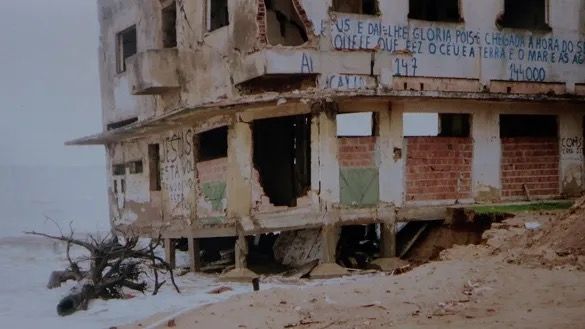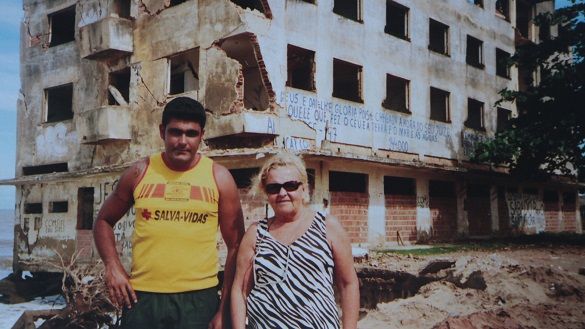Julia Naidin’s Concrete Sea Is A Love Poem For A Dying Town

Rendered in Portuguese, Concrete Seal zooms in on a popular resident of Atafona named Sonia Ferreira, fondly referred to as Ms. Sonia. She takes photos of the area, capturing all sorts of events with varying degrees of importance. A coastal town once brimming with life slowly and sadly becomes a shadow of its former self, and as the deluge gradually sets in, Sonia takes it upon herself to document memories of what the town used to be, taking picture after picture, striving in her own little way to document the history of a town doomed to fate by the elements.
From beach hangouts to religious inscriptions on the walls of abandoned houses, Sonia tries to preserve the moments, stashing as much as she can into the file spaces of cameras and smartphones. But there is nothing she can do when one of the biggest buildings in Atafona caves in, succumbing to the eroding effect of the oceans. As the building crumbles and the sea collects some more of what’s left of the town, all she can do is take another photo, hoping that nature somehow stems the tide, unlikely as that may seem.
With a runtime of 15 minutes, Naidin captures the death throes of a sinking city, with a reverence that is accentuated by the sound of the crashing waves. For the past couple of years, she has dedicated her life to researching and creating global awareness towards the natural disaster that currently plagues Atafona, and this documentary film takes her efforts to a whole new level.

As a result of human action, over the past half-century the Atlantic Ocean has been relentlessly consuming Atafona. Due to climate change, there is little hope for a solution. Global sea level rise due to melting ice means destruction will continue, and at a faster rate. From all indications, Atafona will be submerged by the sea before long.
Concrete Sea is more than just another cry for help, or just another testimony to climate change. It’s also a celebration of memory, of the spaces between moments, of history and culture. Sonia’s love affair with the town, expressed by camera flashes and grainy still photos, means that Atafona will not die, at least not in the hearts of those who lived and worshiped and danced there.
Naidin’s slow-paced transitions and compact editing blend wonderfully with archive footage provided by Sonia to make for more coherent storytelling. The bird’s eye shots help to depict the sorry state of the town, but what really stands out is the poetic nature of Naidin’s voiceover narration, as this is what elevates the film from a climate crisis rumination to a love poem for a dying town.
Concrete Sea will pique the curiosity of geographers, intrigue archeologists, and earn the approval of anthropologists, but it will also resonate with anyone who loves to document and hold on to nostalgia. The future of Atafona may be bleak, and in many ways inevitable, but there’s hope that this place, which used to be a tourist attraction, will never be forgotten, thanks to this film.